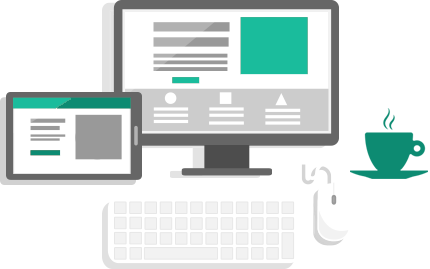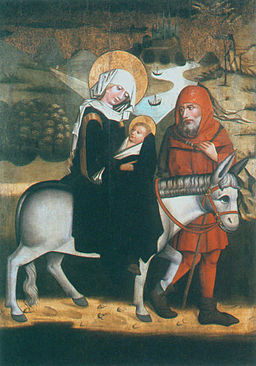Welcome
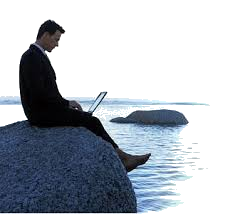
This website is mainly for information purposes. It is a simple showcase intended for businesses, organisations, teachers or others who may want to use a similar, tailored version to host their competency dissemination strategy. And We can advise or assist to set up the portal so that it serve Your needs.
Courses, or other information intended for an audience can be created in the portal and accessed through several enrollment options, like manual enrollment, self enrollment, signup enrollment or through subscriptions. In addition the portal also support eCommerce solutions to access paid services.
The Flexible Learning Portal is built from carefully selected open source software that is updated regularly and easy to install (one-click solutions). This makes the portal easy to maintain and very affordable for everybody that need a competency dissemination tool. The main components are:
-
Content Management System +
 Joomla is an award-winning Content Management System (CMS), which enables you to build Web sites and powerful online applications. A Content Management System is software that keeps track of every piece of content on your Web site, much like your local public library keeps track of books and stores them. Many aspects, including its ease-of-use and extensibility, have made Joomla the most popular Web site software available.
Joomla is an award-winning Content Management System (CMS), which enables you to build Web sites and powerful online applications. A Content Management System is software that keeps track of every piece of content on your Web site, much like your local public library keeps track of books and stores them. Many aspects, including its ease-of-use and extensibility, have made Joomla the most popular Web site software available. -
Integration Component +
 Joomdle offers a wide variety of features through integration of Moodle and Joomla, It allows for Single Sign On (SSO) and the centralisation of user profiles ensuring consistent user details between Joomla and Moodle and other associated extensions. Furthermore Joomdle display Moodle content on Joomla like course catalog, teacher and student information, course content and more. If your focus is on Selling Courses Online Joomdle has the flexibility of integrating with e-Commerce platforms like Hikashop and Paypal.
Joomdle offers a wide variety of features through integration of Moodle and Joomla, It allows for Single Sign On (SSO) and the centralisation of user profiles ensuring consistent user details between Joomla and Moodle and other associated extensions. Furthermore Joomdle display Moodle content on Joomla like course catalog, teacher and student information, course content and more. If your focus is on Selling Courses Online Joomdle has the flexibility of integrating with e-Commerce platforms like Hikashop and Paypal. -
Forum Component +
 Kunena is a forum component that deploys a community forum for each of the different courses created in the Learning Management System (LMS). Other forums may be published manually.
Kunena is a forum component that deploys a community forum for each of the different courses created in the Learning Management System (LMS). Other forums may be published manually. -
eCommerce Component +
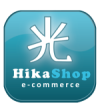 HikaShop is an e-commerce extension which allow purchase of courses or services from the portal. It enables you to manage your shop's content (categories, products, etc), handle advanced prices management, advanced taxes, zones, languages and currencies management.
HikaShop is an e-commerce extension which allow purchase of courses or services from the portal. It enables you to manage your shop's content (categories, products, etc), handle advanced prices management, advanced taxes, zones, languages and currencies management. -
Video Repository +
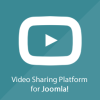 Joomvideos is a powerful video sharing component and repository that is used to easily showcase videos in your courses. It also support uploading videos from PC or online websites like youtube, vimeo, dailymotion and more...
Joomvideos is a powerful video sharing component and repository that is used to easily showcase videos in your courses. It also support uploading videos from PC or online websites like youtube, vimeo, dailymotion and more...
- 1
-
Learning Management System +
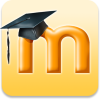 Moodle is a Learning Management System designed to provide educators, administrators and learners with a single robust, secure and integrated system to create personalised learning environments. Moodle is built by the Moodle project which is led and coordinated by Moodle HQ, an Australian company of 30 developers which is financially supported by a network of 60 Moodle Partner service companies worldwide.
Moodle is a Learning Management System designed to provide educators, administrators and learners with a single robust, secure and integrated system to create personalised learning environments. Moodle is built by the Moodle project which is led and coordinated by Moodle HQ, an Australian company of 30 developers which is financially supported by a network of 60 Moodle Partner service companies worldwide. -
Community Component +
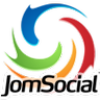 JomSocial is a powerful award-winning social networking component. It provide the community group members a convenient capability to collaborate and chat, share information, photos and videos and manage events. This helps in a way to bridge physical distance between learners, peers or instructors.
JomSocial is a powerful award-winning social networking component. It provide the community group members a convenient capability to collaborate and chat, share information, photos and videos and manage events. This helps in a way to bridge physical distance between learners, peers or instructors. -
Newsletter & Mailing Component +
 Acymailing adds mailing lists and newsletter distribution capability to the portal. It enables management of an unlimited number of subscribers, organizes them into mailing lists and send personalized newsletters.
Acymailing adds mailing lists and newsletter distribution capability to the portal. It enables management of an unlimited number of subscribers, organizes them into mailing lists and send personalized newsletters. -
Blog component +
 K2 provides an integrated solution featuring rich content forms for items like articles, videos, image galleries and attachments.Using K2 you can include in your website a news/magazine site with author blogs, product catalogs, work portfolio, knowledge base, download/document manager, directory listing, event listing & more.
K2 provides an integrated solution featuring rich content forms for items like articles, videos, image galleries and attachments.Using K2 you can include in your website a news/magazine site with author blogs, product catalogs, work portfolio, knowledge base, download/document manager, directory listing, event listing & more. -
Video conferencing +
 Appear.in is a free videoconferencing service for up to 4 simultaneous online participants, and up to 12 participants in the Pro version - available as a paid subscription
Appear.in is a free videoconferencing service for up to 4 simultaneous online participants, and up to 12 participants in the Pro version - available as a paid subscription
- 1
About
The Flexible Learning Portal is an advanced knowledge sharing and dissemination system that can fulfill your requirements to teach an audience; - individuals, a community, an organisation, a business or even the world.
EASY TO USE
Once configured to your requirements, it is easy to develop and post course material, and super easy for learners to access.
MOBILE FRIENDLY
Responsive to various display surfaces, -works great both on desktops, laptops, ipads and smartphones.
Multi-language support
The Flexible Learning Portal support more than 100 different languages which can be selected by a click on the mouse.
FAST LOADING
We provide you the installation on a fast VPS-server, or on infrastructure that you own.
CONSOLE ACCESS
The VPS comes with a Control Panel that give you full access and control over the server if you want.
SUPPORT
The level of support we provide will be as agreed with the individual customer. An early video meeting is recommended to discuss customer requirements, and gives us the necessary details to make a quote.
Future
We believe in very exciting times ahead of us. Our goal as a company is to always have available an updated and affordable competency dissemination solution for customers, be concerned with their suggestions and needs, and provide the support that they want.
Art History : Topics
This online course will cover the history of visual art from its start in the caves of France to mediaeval times
 Roman art includes the visual arts produced in Ancient Rome, and in the territories of the Roman empire. Major forms of Roman art are architecture, painting, sculpture and mosaic work. Metal-work, coin-die and gem engraving, ivory carvings, figurine glass, pottery, and book illustrations are considered to be 'minor' forms of Roman artwork.
Roman art includes the visual arts produced in Ancient Rome, and in the territories of the Roman empire. Major forms of Roman art are architecture, painting, sculpture and mosaic work. Metal-work, coin-die and gem engraving, ivory carvings, figurine glass, pottery, and book illustrations are considered to be 'minor' forms of Roman artwork. 
Romanesque art in Western Europe was popular from about 800 A.D. to the 1100s. The name Romanesque indicates a style like that of the ancient Romans. That description is not entirely accurate, however, since Roman art was only one of many sources that inspired this period.
Romanesque art reflected the political and religious climate of the times. Europe was in upheaval, both from invading tribes and among the religions of the time: Catholicism, the Russian Orthodox Church, and Islam. Romanesque buildings had to be designed for defense, so cathedrals were massive in size.
Romanesque cathedrals were also built in the shape of a Latin cross. They were decorated with stone sculptures depicting Biblical scenes. The walls portrayed religious subjects and were painted in fresco, a durable style of painting done on wet plaster.
Most Romanesque painting took the form of church murals and illuminated manuscripts, or books. There are few Romanesque murals left, since they suffered from fading, damp air, dirt and bad restoration. And as people’s tastes changed, they scraped away or replaced old murals with new works. Most of the murals that have survived over the centuries are only fragments.
http://en.wikipedia.org/wiki/Main_Page
International Gothic is a phase of Gothic art which developed in Burgundy, Bohemia, France and northern Italy in the late 14th century and early 15th century.[1] It then spread very widely across Western Europe, hence the name for the period, which was introduced by the French art historian Louis Courajod at the end of the 19th century.[2]
In this period, artists and portable works such as illuminated manuscripts travelled widely around the continent, creating a common aesthetic among the royalty and higher nobility and considerably reducing the variation in national styles among works produced for the courtly elites. The main influences were northern France, the Duchy of Burgundy, the Imperial court in Prague, and Italy. Royal marriages such as that between Richard II of England and Anne of Bohemia also helped to spread the style.
It was initially a style of courtly sophistication, but somewhat more robust versions spread to art commissioned by the emerging mercantile classes and the smaller nobility. In Northern Europe "Late Gothic" continuations of the style, especially in its decorative elements, could still be found until the early 16th century, as no alternative decorative vocabulary emerged to replace it before Renaissance Classicism. Usage of the terms by art historians varies somewhat, with some using the term more restrictively than others.[3] Some art historians feel the term is "in many ways ... not very helpful.. since it tends to skate over both differences and details of transmission."[4]
This article is about the European Renaissance of the 14th–17th centuries. For the earlier European Renaissance, see Renaissance of the 12th century. For other uses, see Renaissance (disambiguation).
The Renaissance (from French Renaissance, meaning "rebirth"; Italian: Rinascimento, from re- "again" and nascere "be born")[1] was a cultural movement that spanned roughly the 14th to the 17th century, beginning in Italy in the late Middle Ages and later spreading to the rest of Europe. The term is also used more loosely to refer to the historic era, but since the changes of the Renaissance were not uniform, this is a very general use of the term.
As a cultural movement, it encompassed a revival of learning based on classical sources, the development of linear perspective in painting, and gradual but widespread educational reform. Traditionally, this intellectual transformation has resulted in the Renaissance being viewed as a bridge between the Middle Ages and the Modern era. Although the Renaissance saw revolutions in many intellectual pursuits, as well as social and political upheaval, it is perhaps best known for its artistic developments and the contributions of such polymaths as Leonardo da Vinci and Michelangelo, who inspired the term "Renaissance men".[2][3]
There is a general, but not unchallenged, consensus that the Renaissance began in Tuscany in the 14th century.[4] Various theories have been proposed to account for its origins and characteristics, focusing on a variety of factors including the social and civic peculiarities of Florence at the time; its political structure; the patronage of its dominant family, the Medici;[5] and the migration of Greek scholars and texts to Italy following the Fall of Constantinople at the hands of the Ottoman Turks.[6][7][8]
The Renaissance has a long and complex historiography, and there has been much debate among historians as to the usefulness of Renaissance as a term and as a historical age.[9] Some have called into question whether the Renaissance was a cultural "advance" from the Middle Ages, instead seeing it as a period of pessimism and nostalgia for the classical age,[10] while others have instead focused on the continuity between the two eras.[11] Indeed, some have called for an end to the use of the term, which they see as a product of presentism – the use of history to validate and glorify modern ideals.[12] The word Renaissance has also been used to describe other historical and cultural movements, such as the Carolingian Renaissance and the Renaissance of the 12th century.
You are almost done. The only thing left is to gather everything you have made including written works. You will need access to a digital camera, I can help arrange a time where you can present your work in class.
I want you to create an e-portfolio or website that contains all of your work from the semester.
Why not make a Page or Collection in Mahara? Or export your best items from here to Google docs and make a Google docs presentation?







